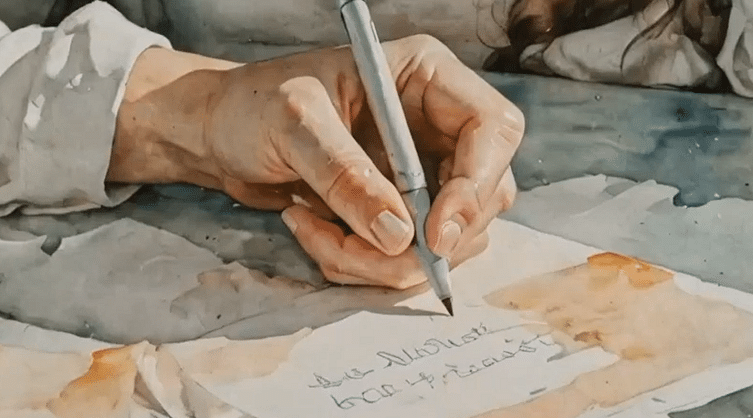

Have you ever wondered about your family’s history? Maybe you’ve heard stories of a mysterious great-aunt who immigrated alone or rumors of royal connections. While researching your family history might seem simple — just gathering names and dates — many genealogists face challenges.
For example, your grandmother’s marriage certificate might show a different surname than expected, or your great-grandfather’s birthplace might appear in multiple locations.
But don’t let these challenges discourage you. With the right strategies, digital and traditional resources, and verification techniques, you can uncover your family’s unique story.
» Learn more about your ancestors with a family history search
1. Begin with the lifespan
I always start by looking at the lifespan. Between what years did your ancestor live? For practice, let’s use a more recent example: my mother lived from 1933 to 2021 in the U.S. As an American, this immediately reveals much about the world she lived in.
She was born during the Great Depression, lived through three major wars, didn’t see a computer until her forties, and saw the impact of two assassinations and the 9/11 terrorist attacks. While these events are well-documented and provide excellent historical context, the next step is to personalize them for my mother.
Following her lifespan, I would ask the following questions:
- Did her family have enough food during the Great Depression?
- Was her father unemployed?
- What stories did she share about how they made ends meet?
- At the start of World War II, she was only eight years old. How did this affect her home and school life?
- What about the Korean and Vietnam Wars? How did they impact her?
You can start with practical historical details and then add personal anecdotes. It’s possible that your relative didn’t discuss their younger years, but write down whatever you do remember. Document it for future generations and then analyze it for clues. Did they mention struggling to stay warm in winter or relying on a specific food source? These seemingly minor details can reveal much about their living conditions.
My mother often talked about filling the coal heater before bed early in her marriage. If the fire went out, she had to ask a neighbor for live coals to restart it. Though I’ve never seen where they lived, I can imagine an apartment building with a basement coal heater, my mother alone with two babies, trying to keep them warm during a Boston winter while my father fought in the Korean War. This is family history, not just genealogy.
2. Be mindful of gender
Historical gender roles significantly impacted our ancestors’ lives. Women in the U.S. couldn’t vote until 1920. This is recent history, even for younger researchers. My mother wasn’t expected or encouraged to attend college. She wasn’t even listed as an owner of our house or car. On the other hand, I couldn’t play Little League Baseball because I was a girl, and I played on my high school’s first women’s basketball team.
But, traditional gender roles weren’t always beneficial for men either. A farmer without sons faced challenges. Women were considered incapable of hard labor, which typically involved field work and construction. They were expected to care for the home, garden, and small animals. People considered it shameful to rely on a woman for such tasks.
3. Find the country of origin
Next, consider where your ancestors came from. You’ll find that their country of origin influenced many aspects of their lives, including:
- Cultural practices: What they ate, wore, and how they celebrated holidays, married, and mourned.
- Historical context: Major events, social norms, and technological advancements of the time.
Remember, these norms vary by region. Two people from different Spanish-speaking countries may have distinct customs and even different meanings for the same words. For example, you may associate Mexico with Spanish, but it’s home to over 60 languages.
» Learn more about Spanish surnames
4. Consider employment
Your ancestor’s occupation reveals much about their life, and understanding how they earned their living adds vital context to your family story. Since women only worked outside the home in the 20th century, early employment records primarily focus on men.
You can start by looking at census records, as they are the most reliable source for employment information. Recently, I uncovered a few of my ancestors who had different occupations: a plowman in 1851 England, a farmer in 1901 Ireland, and a tallow chandler in 1871 Ontario. The last example proved particularly interesting—I learned that a chandler made candles and that “tallow” meant he used animal fat rather than beeswax.
The U.S. Census became more detailed after 1870, reflecting occupations. For example, you can have stone and brick masons separated — you can even find multiple types of packers: crockery, pork, or mule.
Employment records reveal more than just occupations — you’ll see that they also show your ancestor’s economic status. Consider my family’s slate roofing business: one ancestor owned the company and employed his relatives. His greater wealth showed in his home’s design, furniture choice, and even his wife’s elaborate tombstone.
» Explore facts about the U.S. census
5. Investigate military service
Military records offer valuable personal details. Even basic documents like draft registrations reveal physical descriptions — height, weight, hair color, and even scars. These details add depth to family portraits, and help identify shared physical traits across generations.
Some of them are rich in historical context. For instance, U.S. Navy ships during the Korean War produced cruise books similar to yearbooks. These had photographs of crew members, documented travel routes, and captured shipboard activities like boxing matches. My father’s naval service in Korea is preserved in such a book.
The availability of military records varies greatly. One of my ancestors who fought in the Revolutionary War left just a single page of service history. Another’s record from the same war detailed his quarterly locations, battles fought, payments received, and illnesses suffered.
» Learn how to research military records
6. Note how major events affected lives
Historical events often triggered major changes in our ancestors’ lives. Consider my Scottish ancestor, who transformed from a rural farmer to a city-based water manufacturer. This shift could have been due to crop failures or land disputes. On a broader scale, wars and political upheavals frequently prompted families to emigrate to new countries.
For example:
- My husband’s family left Ireland during the Great Potato Famine (1845–1852).
- My mother’s ancestors settled in Canada’s Niagara Falls region as British Loyalists, receiving land grants for their service during the Revolutionary War.
- German immigrants arrived after the failed revolution of 1848, and their presence in the Midwest influenced the outcome of the American Civil War.
Research becomes more challenging as we delve further into the past. Consider my ancestor’s departure from England to Colonial America in 1652 — the exact motivation is still unclear to me.
I narrowed it down to several possibilities:
- Perhaps, as a younger son, he faced limited inheritance prospects and needed better financial opportunities.
- Colonial land grants and adventure might have attracted him.
- Other factors could include legal troubles or business failures. Even discovering one definitive reason adds valuable context to our family history.
This historical detective work enriches your understanding of family decisions, even when you can’t uncover every detail. Each discovered fact helps explain how your ancestors shaped your life.
7. Check lesser-known sources
Small, local sources often reveal the most detailed information about family history. Your ancestor’s stories may live on in local history books, directories, and family Bibles. You can use MyHeritage to explore beyond standard census records and wills. The Collection Catalog offers valuable sections: Books and Publications, Directories, Histories, and Memories and Biographies.
You can also look for local historical organizations, as they preserve unique family information unavailable elsewhere. While these accounts may not be complete or entirely accurate, you may get rare insights. For example, Ohio publications helped me reveal several great-grandfathers who founded or helped settle towns.
Finally, you can try city directories. They became common after the Civil War, appearing regularly in most locations by the 1880s. The annual information helps create a detailed picture of your family’s life in their community.
These volumes provide:
- Residential addresses
- Employment information
- Spouses’ names
- Business advertisements (if your family owned a company)
Challenges when researching family history
Two main factors determine the availability of family history information: period and record preservation.
The period impacts research depth. You can find detailed information about family life in early 20th century America relatively easily. But, life in 16th century France may prove more challenging. Fortunately, new research and publications continuously expand our historical knowledge. Online resources, including those on MyHeritage, grow daily.
Record availability also varies greatly across cultures and regions. The U.S., though younger, preserved many early colonial records. But, as families moved westward, record-keeping infrastructure needed to catch up. Remote settlements often needed more formal systems for maintaining documents.
So, begin your research with available records, even if limited. As archives expand and new sources emerge, you may discover additional information about your family’s history.
Unlock your family’s past
Remember that every family tree is a living document, continuously growing and evolving with each new discovery. The research techniques and resources we’ve explored are your foundation, but it’s your dedication to preserving and sharing these stories that will ensure your family’s history endures for generations to come.
Each discovery adds another meaningful chapter to your family’s story, whether you’ve found a long-lost family connection, solved a centuries-old mystery, or simply gained a deeper appreciation for your ancestors’ resilience.
» Start your family history search









